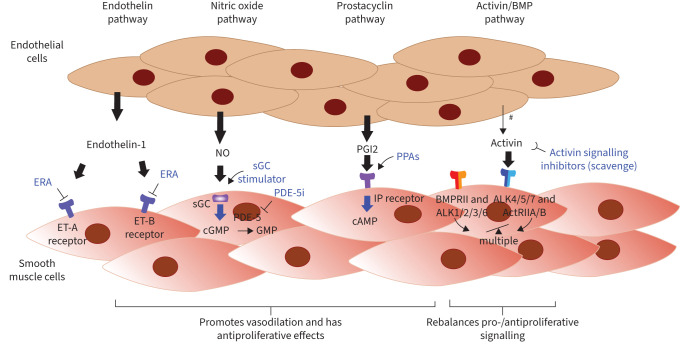FIGURE 2.
Pulmonary arterial hypertension (PAH) therapies work through four major pathways: endothelin-1 receptor antagonists (ERAs) block the endothelin (ET)-1 receptor. Phosphodiesterase-5 inhibitors (PDE-5i) and soluble guanylyl cyclase (sGC) stimulators increase signalling in the nitric oxide (NO) and cyclic GMP (cGMP) pathway, resulting in increased cGMP levels, and prostacyclin (PGI2) and other prostacyclin pathway agents (PPAs) bind the prostacyclin receptor (IP receptor), promoting the production of cAMP, leading to vasodilation and inhibiting vascular cell growth. Sotatercept, a novel biologic agent targeting the transforming growth factor-β superfamily, acts as a ligand trap for activins and related growth factors. This helps rebalance growth-promoting and growth-inhibiting signalling pathways, with multiple downstream effects. Signalling is shown as proceeding from endothelial cell to smooth muscle cell for simplicity, but is bidirectional. BMPR: bone morphogenetic protein receptor; ALK: anaplastic lymphocyte kinase; ActR: activin receptor. #: in addition, signalling mediators also originate from multiple other cell types, particularly for activin.

